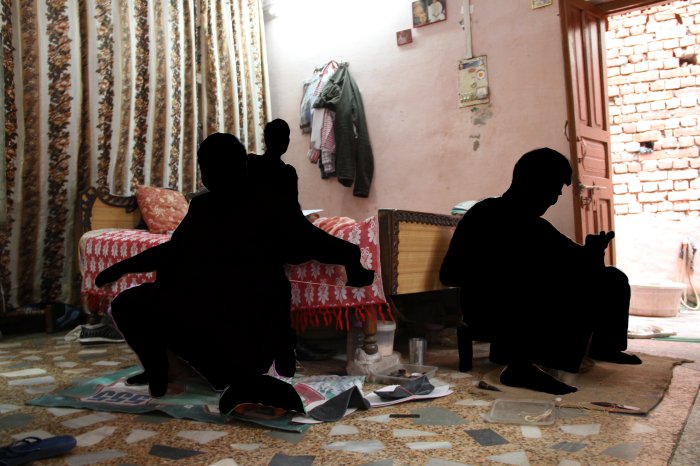Category: silencing
Decolonising ‘follow the things’ teaching and learning? Defeated
In the summer of 2020, Geographies of Material Culture, the undergraduate module behind our website, was totally reorganised for online teaching and learning. As detailed in our recent post announcing the launch of its public archive, it brought together 10 ‘follow the thing’ films and 10 followthethings.com pages about their making, discussion and impacts.
This module was also redesigned – from the selection and sequence of these films to the content and appearance of its website – to try to decolonise its pedagogy. Over the past couple of years a brilliant decolonising network has taken shape at our university with all kinds of exciting initiatives involving staff and students all over the place. The changes made to our module were informed and inspired by this wider movement. Some were generic strategies for decolonising a module and others were more tailored to the module, its materials and its aims. Module leader and followthethings.com ‘CEO’ Ian has been trying to channel his white privilege through anti-racist education for over 20 years now (see this from 2000). But this felt like a step change for his research and teaching about the ‘follow the things’ genre of commodity activism which simply asks ‘Who made my stuff?’
If you check the module’s public archive, you will see how the following decolonising strategies helped to shape it. There were five aims:
- to disrupt the ‘white saviour complex’ of ‘guilty’ Northern (white) consumers wanting only to shop more ‘ethically to help exploited (POC) workers by trying to shift responses to ‘who made my stuff’ filmmaking ‘from guilt to solidarity’ (Young 2003).
Fashion Revolution call for papers at RGS(IBG) annual conference
We’re involved in running a session at the Royal Geographical Society (Institute of British Geography) annual conference this summer whose aim is to bring academic fashion experts into dialogue with the Fashion Revolution movement. We’re asking how fashion research can contribute to what is becoming a worldwide movement for a more ethical / sustainable fashion industry in the wake of the Rana Plaza factory collapse in April 2013. We’re looking for academic research from any discipline that can contribute to Fashion Revolution’s five year planning. Here’s what we’re doing. Please get in touch with Ian, Lousie and/or Alex to discuss any ideas. The deadline for abstracts is Friday 12th February.
– Call for papers –
Scholar activism and the Fashion Revolution: ‘who made my clothes?’

Abstract
The collapse of the Rana Plaza factory complex on April 24th 2013, which crushed to death over 1,000 people making clothes for Western brands, was a final straw, a call to arms, for significant change in the fashion industry. Since then, tens of thousands of people have taken to social media, to the streets, to their schools and halls of government to uncover the lives hidden in the clothes we wear. Businesses, consumers, governments, academics, NGOS and others working towards a safer, cleaner and more just future for the fashion industry have been galvanised.
Guest blog: gagged student reporter publishes story!

Original photo: copyright Ben Doherty / Fairfax Media Australia (used with permission)
Student and followthethings.com intern Will Kelleher has an exclusive story.
The last two weeks before I handed in my dissertation were a bit frantic. I was trying to publish an article about the rugby ball I had followed in my University’s student newspaper Exeposé.
Because of the damning information I had found, it was right and proper to contact the company who made that ball for a response. They demanded to see the article and, having read it, went on the attack:
Why Lego ‘Primark on the rack 2013’?
We researched a 2009 BBC Panorama documentary ‘Primark on the rack’ for followthethings.com. This was a documentary exposing Primark for producing its notoriously cheap clothes in Indian sweatshops. It contained a 45 second scene in which child labourers were filmed checking that sequins were firmly attached to its sequined tops. Primark claimed that this scene had been ‘faked’ and made a concerted effort to discredit the whole film, with mixed success (detailed on our site here).
As with many of our pages, we made a few scenes in Lego, uploaded them to a flickr set, and embedded them. Today, we added a couple of new scenes to our ‘Primark on the rack’ set, to bring the story up to date.
These scenes are intended to highlight a theme that cuts across a number of examples of followthethings filmmaking on our site: corporations responding to sweatshop, worker health and environmental destruction exposures by employing public relations and/or legal teams to ‘prove’ that key scenes – and, by implication, whole films – are ‘faked’. This is, for example, how Primark responded to the BBC documentary in 2009, how Dole responded to Fredrik Gertten’s documentary ‘Bananas!*’ in 2009 (link), and how Chevron responded to Joe Berlinger’s documentary ‘Crude: the real price of oil’ in 2009 (link).
This past week has seen relentless TV news footage and newspaper column inches devoted to the Savar Rana garment factory collapse. Journalists have told unfolding stories of dramatic rescue efforts and the shocking numbers of people who made Primark, Joe Fresh, Matalan, Mango, Benneton, Bon Marche and other branded clothes being found dead in the wreckage of their workplace or missing, presumed dead.
NGOs and others are putting pressure on these clothing brands to respond appropriately to this disaster by properly compensating its victims and their families, by signing agreements that they’d been reluctant to sign before, and by putting into place more comprehensive auditing practices so that what they agree to is more likely to be done in the future.
This pressure continues to be applied, and companies are responding. On Monday, for example, the BBC reported that Primark had released a statement saying that it ‘accepts all its responsibilities in this disaster’ (Source: BBC 2013 link). ALL of them. We shall see.
This is not a single documentary with a named director, whose work can be ‘discredited’ with the right PR and legal teams in place. This is ‘Primark on the rack 2013’. Click the photos to get to the whole 6 scene set.
Postscript: why Lego?
We’ve been inspired by Lego re-creations that we found online of hidden scenes from the ‘War on Terror’. They had been made and posted online in 2009 by an artist/blogger called Legofesto (see her flickr sets here). She argued that:
‘By using toys, I hope the viewer will linger longer over the image and think again about what is actually being depicted or described, in a visual language that is recognised by us all: LEGO. … The incongruity between the immoral and horrific acts and events depicted and the smiley-faced children’s toy create a tension’ (legofesto in Time Magazine 2009 link).
By photographing re-creations and publishing them online, she argues:
‘I want to keep the debate going. To keep it in people’s minds, to remind us of our atrocities because the media has moved on and they don’t want to dwell on the tactics [of the ‘War on Terror’]. … People are using Legofesto to talk about torture and state violence’ (legofesto in Carling 2009 link).
We want our Lego re-creations to help keep trade (in)justice debates going, to keep them in people’s minds, etc. in a similar way.


